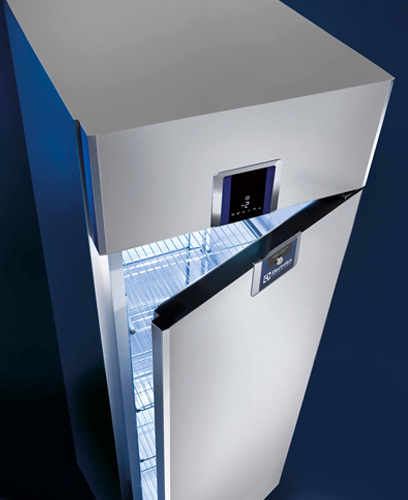Introduction
From cabinets to counters, commercial refrigeration equipment represents nearly a third of the energy used within a professional kitchen. Given its always-on nature, operators could be forgiven for thinking that high running costs cannot be avoided. Yet, with proper planning and regular maintenance, that needn’t be the case.
What is an energy-efficient commercial refrigerator?
The easiest way to see the energy efficiency of an appliance is to look at its energy label. From 1 January 2021, a new energy labelling process was introduced in the UK. Commercial refrigerators are now rated ‘A+++ to G’, with ‘A+++’ being the highest – or most efficient – class and ‘G’ being the least. The label also displays key information, such as the annual energy consumption (kWh/annum) and the total recommended capacity.
Another helpful performance indicator for operators to be aware of is Climate Class. This determines the capability of the product to correctly preserve food in different working conditions. Given how hot a professional kitchen can get, operators should look for appliances with Climate Class 4 or 5. This will ensure the unit will operate efficiently, even if the ambient temperature reaches 30- 40°C.

Energy savings with commercial refrigerators
Modern commercial refrigerators and freezers have been designed with a wide range of innovative technology to really maximise efficient operation. The Electrolux Professional ecostoreHP Premium range, for example, uses the Optiflow intelligent air circulation system. This maintains a consistent interior temperature no matter how many times the door is opened, generating significant savings for operators.
Other factors which can impact the efficiency of commercial refrigeration include the choice of insulation materials and the thickness, as well as the refrigerant used. Electrolux Professional models use the natural R290 refrigerant gas. This is both more sustainable than hydrofluorocarbon (HFC) refrigerants, and less corrosive of core internal parts such as the compressor.
Energy saving tips for a commercial refrigerator
The most effective way to keep energy costs down is to invest in the most efficient model you can afford. However, there are certain practices that operators can do to maximise the efficiency of any commercial refrigerator.
- Operators should never load the appliance beyond the storage capacity listed on the energy label. Overloading can limit the airflow around the produce, potentially causing it to spoil earlier. While not strictly linked to energy, wasted food is still an expense that must be avoided at all costs. The Electrolux Professional ecostoreHP counters range, for examples, benefits from an increased 20% capacity compared to comparable counters.
- The condenser coil should be cleaned every three months to prevent the build-up of dust or debris. This will prevent overheating and help the unit to run as efficiently as possible. Alternatively, look for models with wire frame condensers, such as the ecostoreHP Premium series, as they require less maintenance than standard condensers.
- Door seals should be frequently removed, cleaned, and checked for leaks. A leaky seal may increase power consumption as the unit works harder to maintain temperature. However, they are easy to replace and doing so regularly will ensure efficient operation. For example, Electrolux Professional models feature a triple chamber magnetic gasket which can easily be removed and maintained without impacting the insulation properties of the appliance.
Conclusion
Commercial refrigeration may be among the most energy-intensive items of catering equipment. Yet, there are many ways operators can save money. From investing in highly efficient models to adopting cleaning and maintenance best practices, refrigeration no longer needs to be a drain on energy bills.
